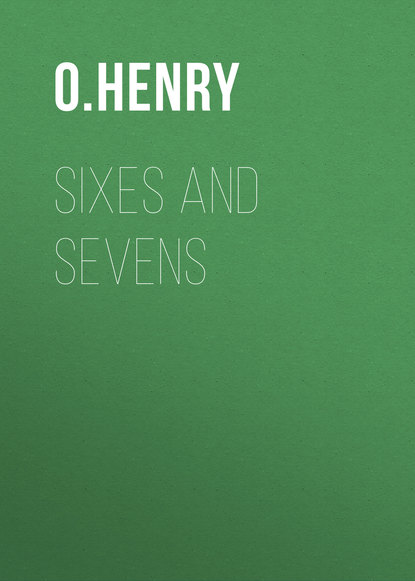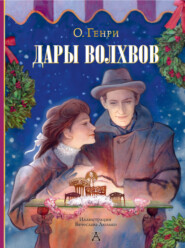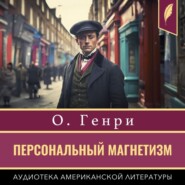По всем вопросам обращайтесь на: info@litportal.ru
(©) 2003-2024.
✖
Sixes and Sevens
Настройки чтения
Размер шрифта
Высота строк
Поля
Shamrock Jolnes and his client went to the tenement house where Mary Snyder had lived, and the detective demanded to be shown the room in which she had lived. It had been occupied by no tenant since her disappearance.
The room was small, dingy, and poorly furnished. Meeks seated himself dejectedly on a broken chair, while the great detective searched the walls and floor and the few sticks of old, rickety furniture for a clue.
At the end of half an hour Jolnes had collected a few seemingly unintelligible articles – a cheap black hat pin, a piece torn off a theatre programme, and the end of a small torn card on which was the word "left" and the characters "C 12."
Shamrock Jolnes leaned against the mantel for ten minutes, with his head resting upon his hand, and an absorbed look upon his intellectual face. At the end of that time he exclaimed, with animation:
"Come, Mr. Meeks; the problem is solved. I can take you directly to the house where your sister is living. And you may have no fears concerning her welfare, for she is amply provided with funds – for the present at least."
Meeks felt joy and wonder in equal proportions.
"How did you manage it?" he asked, with admiration in his tones.
Perhaps Jolnes's only weakness was a professional pride in his wonderful achievements in induction. He was ever ready to astound and charm his listeners by describing his methods.
"By elimination," said Jolnes, spreading his clues upon a little table, "I got rid of certain parts of the city to which Mrs. Snyder might have removed. You see this hatpin? That eliminates Brooklyn. No woman attempts to board a car at the Brooklyn Bridge without being sure that she carries a hatpin with which to fight her way into a seat. And now I will demonstrate to you that she could not have gone to Harlem. Behind this door are two hooks in the wall. Upon one of these Mrs. Snyder has hung her bonnet, and upon the other her shawl. You will observe that the bottom of the hanging shawl has gradually made a soiled streak against the plastered wall. The mark is clean-cut, proving that there is no fringe on the shawl. Now, was there ever a case where a middle-aged woman, wearing a shawl, boarded a Harlem train without there being a fringe on the shawl to catch in the gate and delay the passengers behind her? So we eliminate Harlem.
"Therefore I conclude that Mrs. Snyder has not moved very far away. On this torn piece of card you see the word 'Left,' the letter 'C,' and the number '12.' Now, I happen to know that No. 12 Avenue C is a first-class boarding house, far beyond your sister's means – as we suppose. But then I find this piece of a theatre programme, crumpled into an odd shape. What meaning does it convey. None to you, very likely, Mr. Meeks; but it is eloquent to one whose habits and training take cognizance of the smallest things.
"You have told me that your sister was a scrub woman. She scrubbed the floors of offices and hallways. Let us assume that she procured such work to perform in a theatre. Where is valuable jewellery lost the oftenest, Mr. Meeks? In the theatres, of course. Look at that piece of programme, Mr. Meeks. Observe the round impression in it. It has been wrapped around a ring – perhaps a ring of great value. Mrs. Snyder found the ring while at work in the theatre. She hastily tore off a piece of a programme, wrapped the ring carefully, and thrust it into her bosom. The next day she disposed of it, and, with her increased means, looked about her for a more comfortable place in which to live. When I reach thus far in the chain I see nothing impossible about No. 12 Avenue C. It is there we will find your sister, Mr. Meeks."
Shamrock Jolnes concluded his convincing speech with the smile of a successful artist. Meeks's admiration was too great for words. Together they went to No. 12 Avenue C. It was an old-fashioned brownstone house in a prosperous and respectable neighbourhood.
They rang the bell, and on inquiring were told that no Mrs. Snyder was known there, and that not within six months had a new occupant come to the house.
When they reached the sidewalk again, Meeks examined the clues which he had brought away from his sister's old room.
"I am no detective," he remarked to Jolnes as he raised the piece of theatre programme to his nose, "but it seems to me that instead of a ring having been wrapped in this paper it was one of those round peppermint drops. And this piece with the address on it looks to me like the end of a seat coupon – No. 12, row C, left aisle."
Shamrock Jolnes had a far-away look in his eyes.
"I think you would do well to consult Juggins," said he.
"Who is Juggins?" asked Meeks.
"He is the leader," said Jolnes, "of a new modern school of detectives. Their methods are different from ours, but it is said that Juggins has solved some extremely puzzling cases. I will take you to him."
They found the greater Juggins in his office. He was a small man with light hair, deeply absorbed in reading one of the bourgeois works of Nathaniel Hawthorne.
The two great detectives of different schools shook hands with ceremony, and Meeks was introduced.
"State the facts," said Juggins, going on with his reading.
When Meeks ceased, the greater one closed his book and said:
"Do I understand that your sister is fifty-two years of age, with a large mole on the side of her nose, and that she is a very poor widow, making a scanty living by scrubbing, and with a very homely face and figure?"
"That describes her exactly," admitted Meeks. Juggins rose and put on his hat.
"In fifteen minutes," he said, "I will return, bringing you her present address."
Shamrock Jolnes turned pale, but forced a smile.
Within the specified time Juggins returned and consulted a little slip of paper held in his hand.
"Your sister, Mary Snyder," he announced calmly, "will be found at No. 162 Chilton street. She is living in the back hall bedroom, five flights up. The house is only four blocks from here," he continued, addressing Meeks. "Suppose you go and verify the statement and then return here. Mr. Jolnes will await you, I dare say."
Meeks hurried away. In twenty minutes he was back again, with a beaming face.
"She is there and well!" he cried. "Name your fee!"
"Two dollars," said Juggins.
When Meeks had settled his bill and departed, Shamrock Jolnes stood with his hat in his hand before Juggins.
"If it would not be asking too much," he stammered – "if you would favour me so far – would you object to – "
"Certainly not," said Juggins pleasantly. "I will tell you how I did it. You remember the description of Mrs. Snyder? Did you ever know a woman like that who wasn't paying weekly instalments on an enlarged crayon portrait of herself? The biggest factory of that kind in the country is just around the corner. I went there and got her address off the books. That's all."
III
WITCHES' LOAVES
Miss Martha Meacham kept the little bakery on the corner (the one where you go up three steps, and the bell tinkles when you open the door).
Miss Martha was forty, her bank-book showed a credit of two thousand dollars, and she possessed two false teeth and a sympathetic heart. Many people have married whose chances to do so were much inferior to Miss Martha's.
Two or three times a week a customer came in in whom she began to take an interest. He was a middle-aged man, wearing spectacles and a brown beard trimmed to a careful point.
He spoke English with a strong German accent. His clothes were worn and darned in places, and wrinkled and baggy in others. But he looked neat, and had very good manners.
He always bought two loaves of stale bread. Fresh bread was five cents a loaf. Stale ones were two for five. Never did he call for anything but stale bread.
Once Miss Martha saw a red and brown stain on his fingers. She was sure then that he was an artist and very poor. No doubt he lived in a garret, where he painted pictures and ate stale bread and thought of the good things to eat in Miss Martha's bakery.
Often when Miss Martha sat down to her chops and light rolls and jam and tea she would sigh, and wish that the gentle-mannered artist might share her tasty meal instead of eating his dry crust in that draughty attic. Miss Martha's heart, as you have been told, was a sympathetic one.
In order to test her theory as to his occupation, she brought from her room one day a painting that she had bought at a sale, and set it against the shelves behind the bread counter.
It was a Venetian scene. A splendid marble palazzio (so it said on the picture) stood in the foreground – or rather forewater. For the rest there were gondolas (with the lady trailing her hand in the water), clouds, sky, and chiaro-oscuro in plenty. No artist could fail to notice it.
Two days afterward the customer came in.
"Two loafs of stale bread, if you blease.
"You haf here a fine bicture, madame," he said while she was wrapping up the bread.
"Yes?" says Miss Martha, revelling in her own cunning. "I do so admire art and" (no, it would not do to say "artists" thus early) "and paintings," she substituted. "You think it is a good picture?"

















